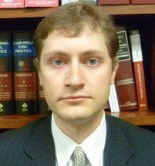
State: Calif.
Grinberg: PTP's Report Finding Injury Trumps QME's Report of 'No Complaints': [2021-10-15]
On Halloween, children will often ask for scary stories. There is no surer way to give those kids an overdose of disappointment than to describe the horror and dread that is California’s workers’ compensation system.

Gregory Grinberg
As a certified specialist in workers’ compensation, as a father, as an uncle and as a person who is obsessed with all things workers' comp (much to the annoyance of friends, family members and random strangers on public transit), I can promise you that no matter how horrible or unfair or scary workers’ compensation is, the kids aren’t interested.
So, rather than telling them about the horrors of “developing the record” or “this is just a benefits delivery system,” tell them instead about ghosts, werewolves or even the Pied Piper.
But, since you have the misfortune of visiting the blog, I will share some workers’ comp stories with you.
The case I bring to your attention today is that of Gonzalez v. Costco Wholesale. Applicant claimed an orthopedic cumulative trauma to the right wrist and low back spanning about nine years while working as a warehouse stocker. He had several other orthopedic injuries as well, although those appear to be specific dates of injury rather than CTs. In any case, he was evaluated by several qualified medial evaluators, none of whom found a CT to his right wrist and low back.
His treating physician, however, did find a CT to the low back and right wrist and pointed out that other QMEs, including the QME who specifically saw applicant on his CT claim, did not appear to review the PTP’s reporting. The judge at trial found that there was sufficient basis for finding a CT, and the Workers' Compensation Appeals Board upheld the opinion.
The WCAB also came down hard on the defense for accusing the PTP of bias without evidence, warning of possible sanctions for such claims. I can’t help but wonder if evidence that the PTP is a member of Sam’s Club but not Costco is sufficient proof of bias against the defendant.
The QME’s comments that “the patient is asked about the right wrist and hand and he has no complaints” was insufficient to find that there was no CT in light of the PTP's documented complaints to those body parts over the past several months.
So, what do we take away from this? A benign examination with a QME is likely insufficient to prevail on AOE/COE in light of medical reporting to the contrary from the PTP.
Now, I have no specific knowledge of the particular PTP in this case, but it is not hard to conceive of some PTPs, well versed in the workers’ compensation system, guiding the injured worker into reporting the symptoms that would be most beneficial to a case.
Certainly, the majority of physicians would not do this, and the majority of injured workers would not do this, either. To some extent, there is sample bias among defense attorneys because most injuries don’t require an attorney at all. We tend to get the ones that are contentious. But if that’s the theory — that the PTP is biased and is guiding applicant into reporting — some actual evidence is necessary to prove this point.
Often, third-party administrators and insurers can aggregate data to see who the problem doctors are, whether from overprescribing to cookie-cutter complaints. Further, discovery such as depositions, sub rosa and rebuttal reports can also be used.
The QME should review all treatment reports and comment on them. The QME should be deposed to ask how he or she explains the difference between the examination for med-legal purposes and the PTP’s reporting.
Of course, the burden of proof on causation for an orthopedic injury, absent a presumption case, is on applicant. But if applicant is going to trial with PTP reports, that burden can be carried.
Gregory Grinberg is managing partner of Gale, Sutow & Associates’ S.F. Bay South office and a certified specialist in workers’ compensation law. This post is reprinted with permission from Grinberg’s WCDefenseCA blog.